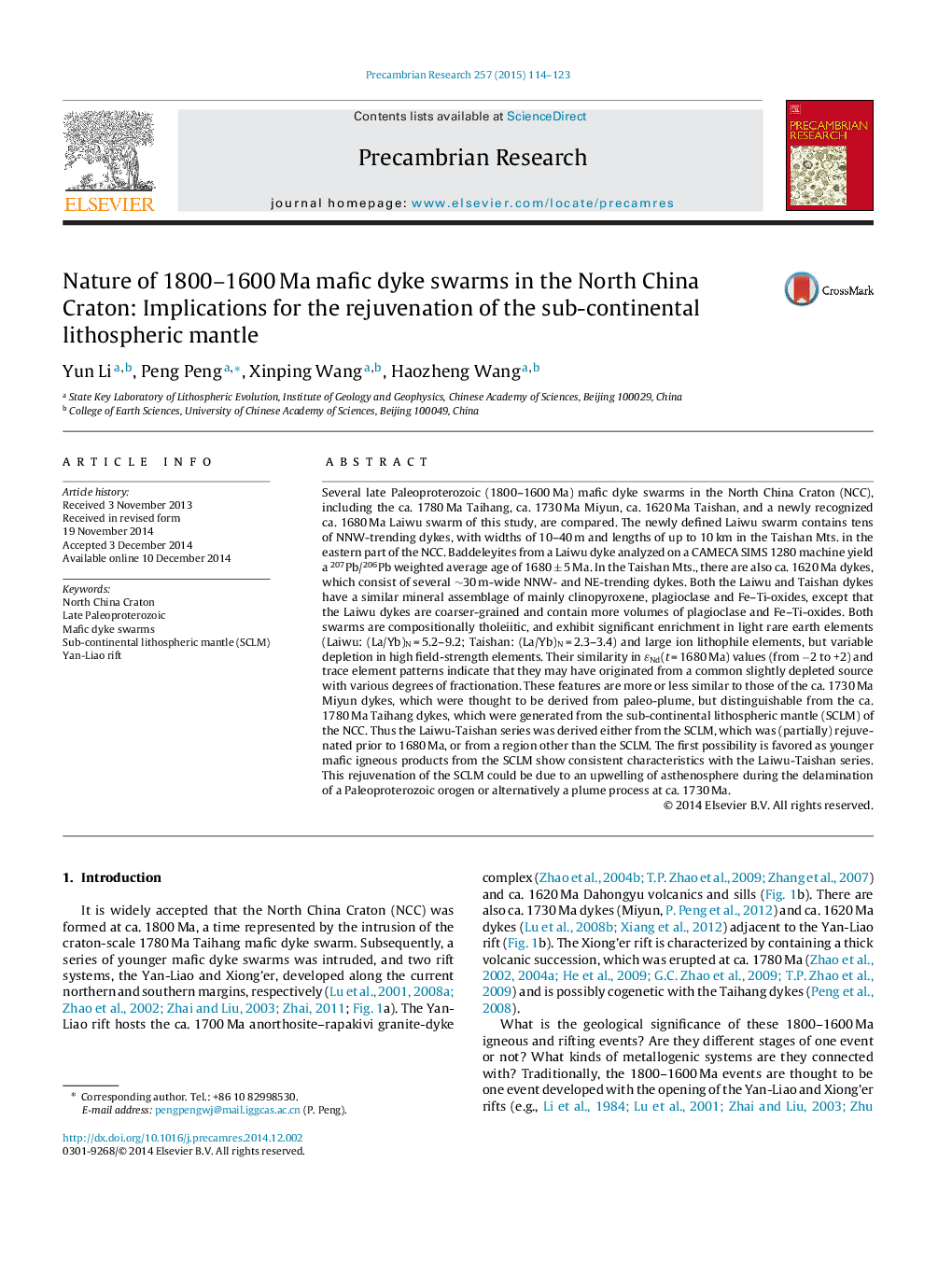| کد مقاله | کد نشریه | سال انتشار | مقاله انگلیسی | نسخه تمام متن |
|---|---|---|---|---|
| 4722856 | 1639618 | 2015 | 10 صفحه PDF | دانلود رایگان |

• A 1680 Ma mafic dyke swarm from the North China Craton is defined and dated.
• Nature of the 1780 Ma, 1730 Ma, 1680 Ma and 1620 Ma dyke swarms is compared.
• It indicates a rejuvenation of the lithospheric mantle under North China at 1730 Ma.
Several late Paleoproterozoic (1800–1600 Ma) mafic dyke swarms in the North China Craton (NCC), including the ca. 1780 Ma Taihang, ca. 1730 Ma Miyun, ca. 1620 Ma Taishan, and a newly recognized ca. 1680 Ma Laiwu swarm of this study, are compared. The newly defined Laiwu swarm contains tens of NNW-trending dykes, with widths of 10–40 m and lengths of up to 10 km in the Taishan Mts. in the eastern part of the NCC. Baddeleyites from a Laiwu dyke analyzed on a CAMECA SIMS 1280 machine yield a 207Pb/206Pb weighted average age of 1680 ± 5 Ma. In the Taishan Mts., there are also ca. 1620 Ma dykes, which consist of several ∼30 m-wide NNW- and NE-trending dykes. Both the Laiwu and Taishan dykes have a similar mineral assemblage of mainly clinopyroxene, plagioclase and Fe–Ti-oxides, except that the Laiwu dykes are coarser-grained and contain more volumes of plagioclase and Fe–Ti-oxides. Both swarms are compositionally tholeiitic, and exhibit significant enrichment in light rare earth elements (Laiwu: (La/Yb)N = 5.2–9.2; Taishan: (La/Yb)N = 2.3–3.4) and large ion lithophile elements, but variable depletion in high field-strength elements. Their similarity in ɛNd(t = 1680 Ma) values (from −2 to +2) and trace element patterns indicate that they may have originated from a common slightly depleted source with various degrees of fractionation. These features are more or less similar to those of the ca. 1730 Ma Miyun dykes, which were thought to be derived from paleo-plume, but distinguishable from the ca. 1780 Ma Taihang dykes, which were generated from the sub-continental lithospheric mantle (SCLM) of the NCC. Thus the Laiwu-Taishan series was derived either from the SCLM, which was (partially) rejuvenated prior to 1680 Ma, or from a region other than the SCLM. The first possibility is favored as younger mafic igneous products from the SCLM show consistent characteristics with the Laiwu-Taishan series. This rejuvenation of the SCLM could be due to an upwelling of asthenosphere during the delamination of a Paleoproterozoic orogen or alternatively a plume process at ca. 1730 Ma.
Journal: Precambrian Research - Volume 257, February 2015, Pages 114–123